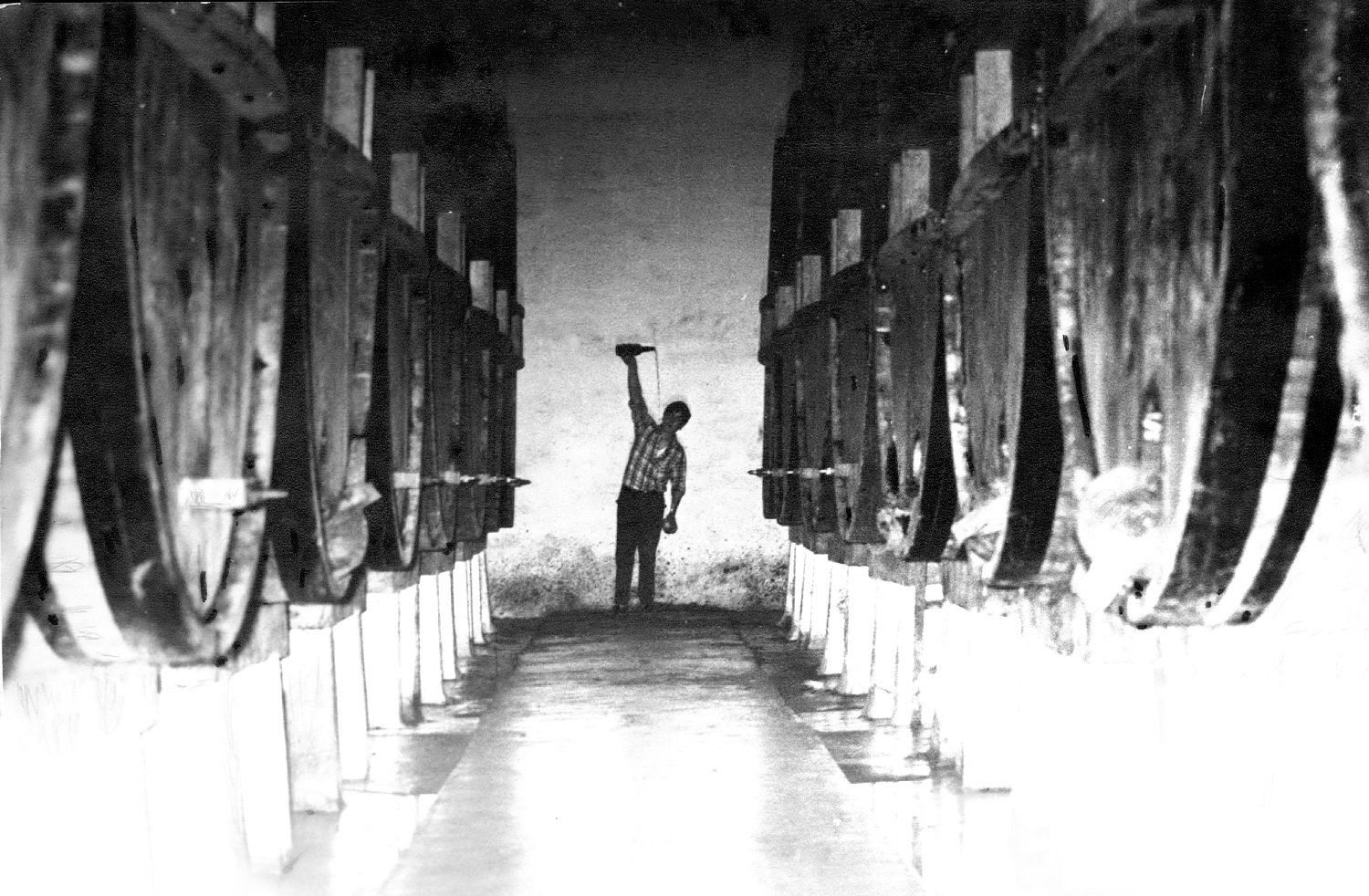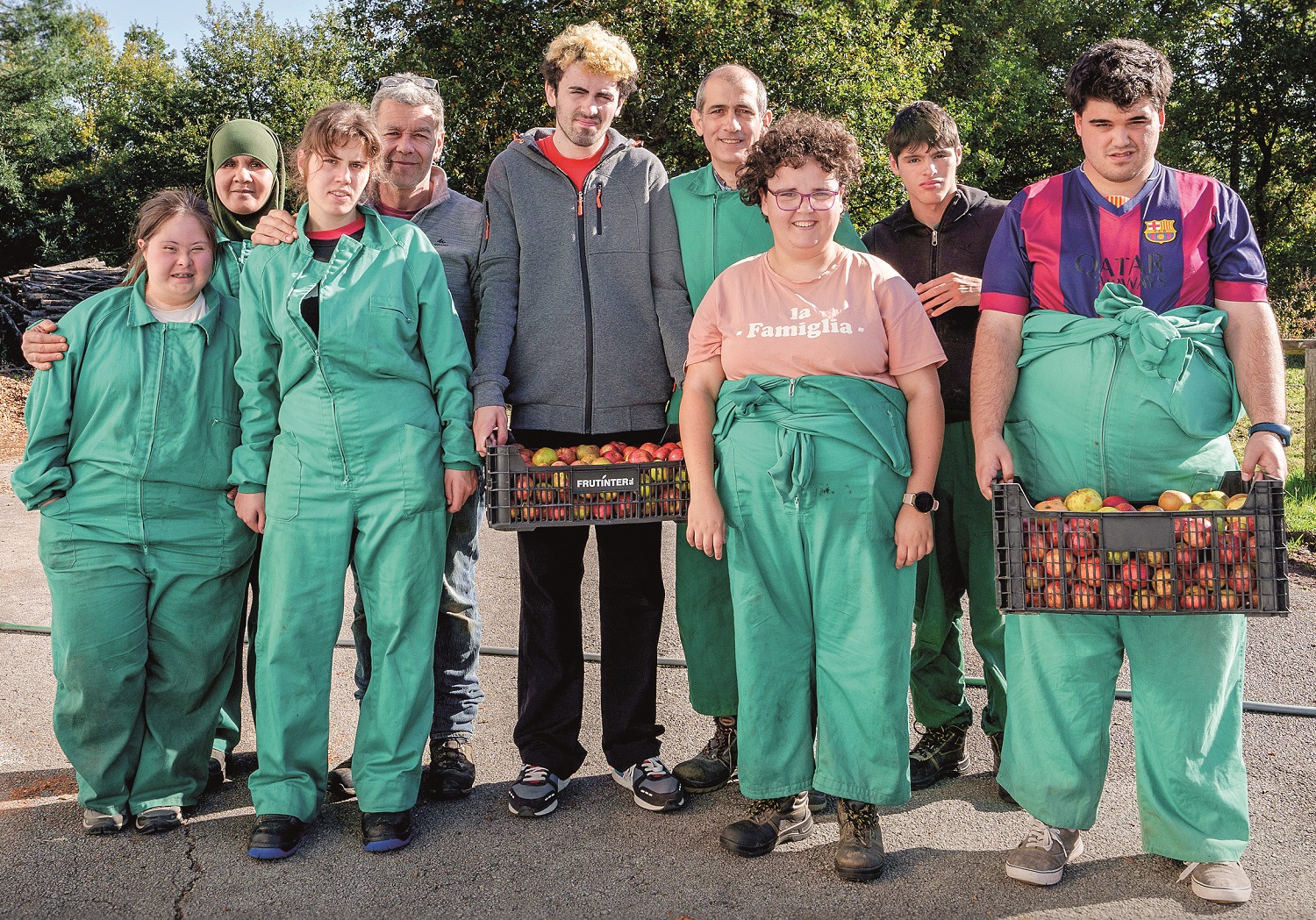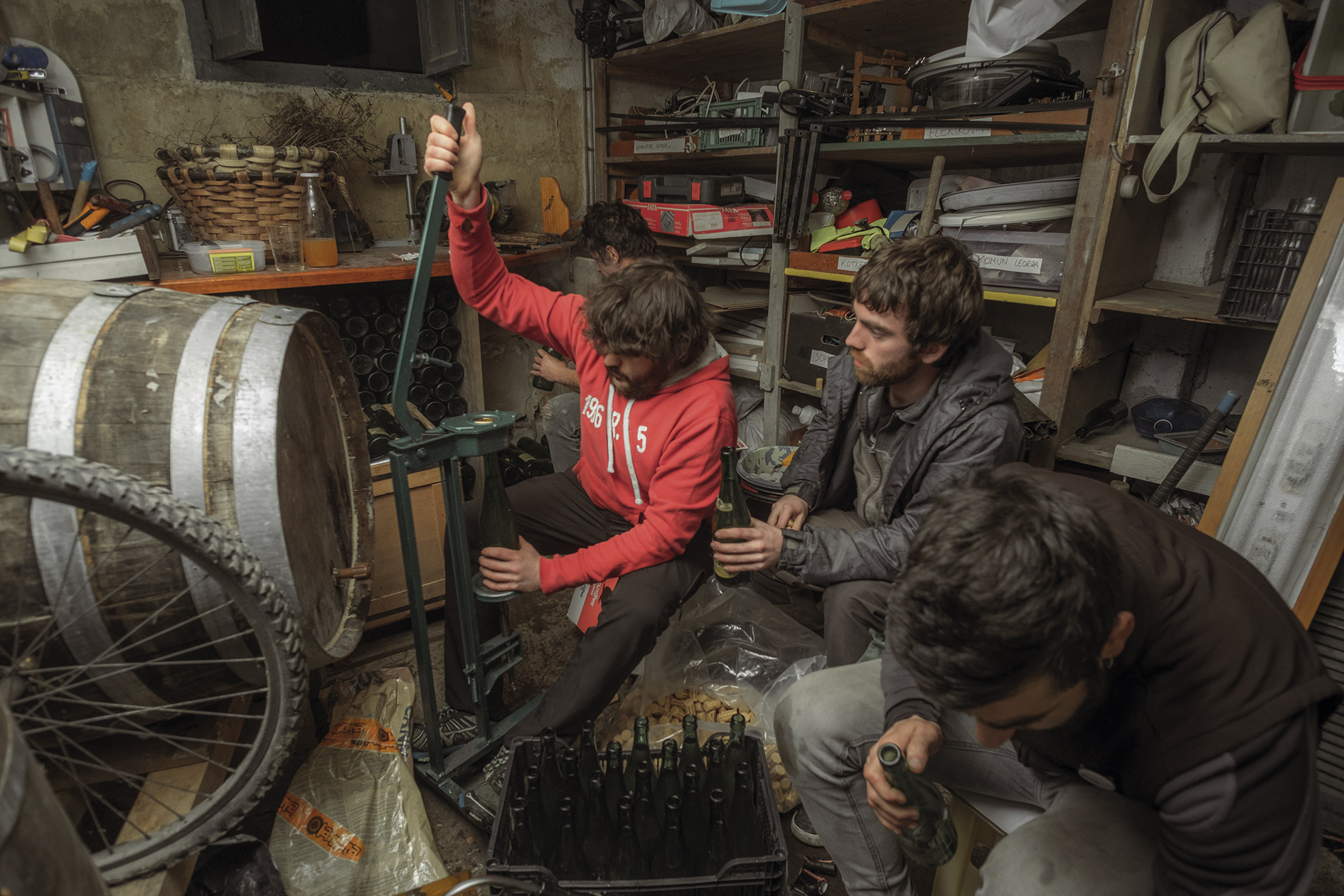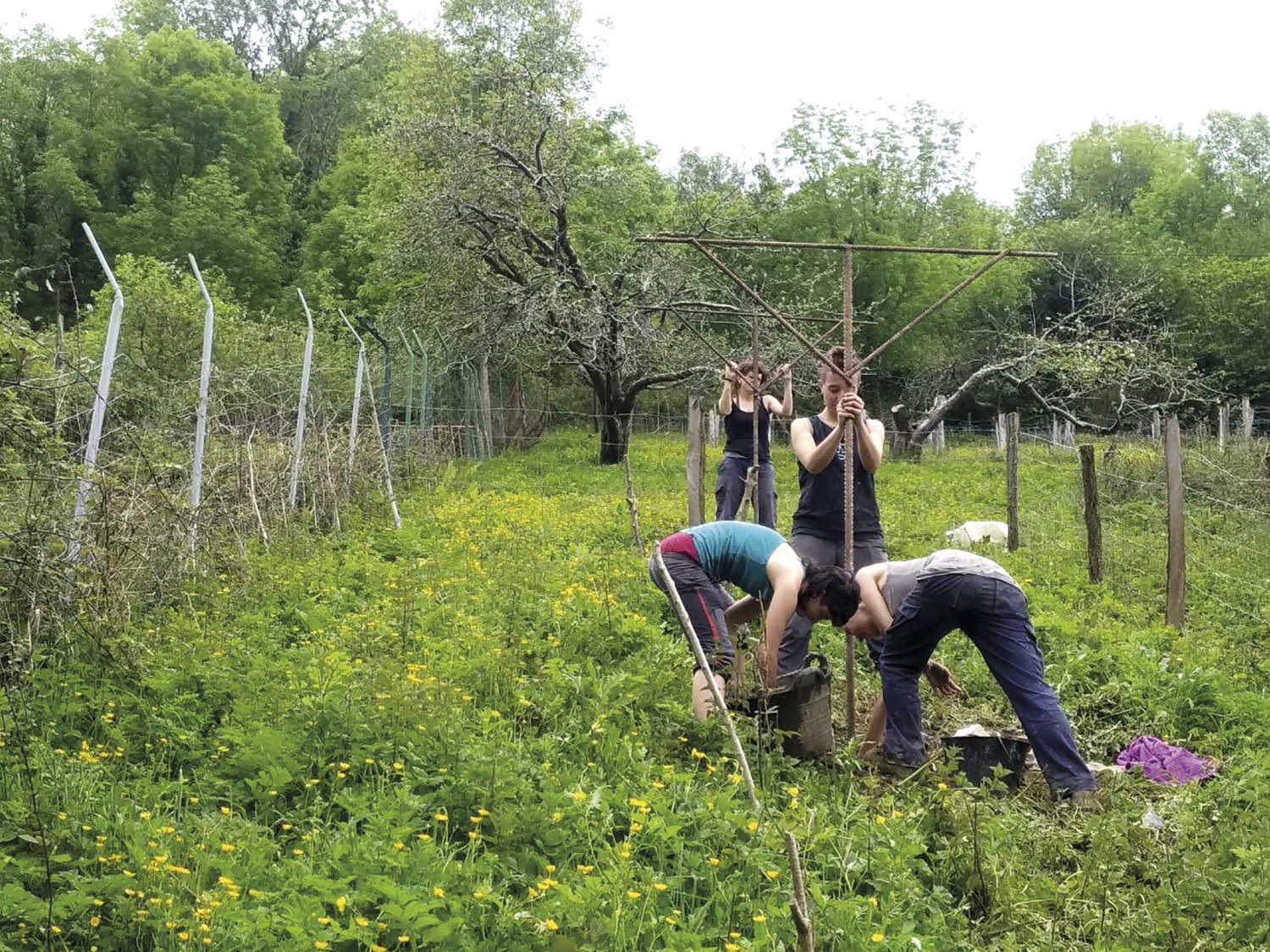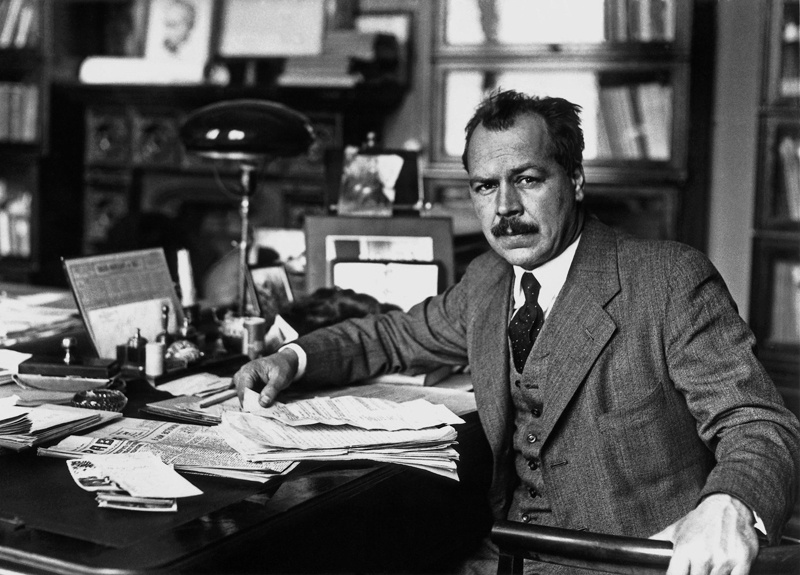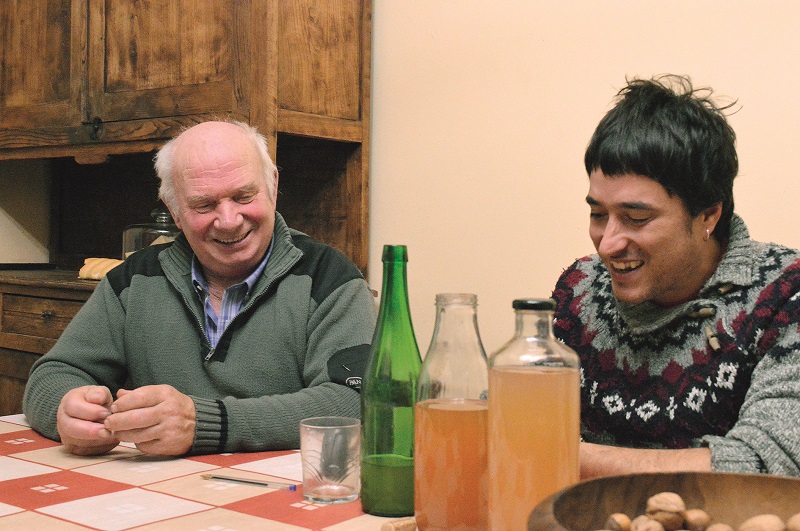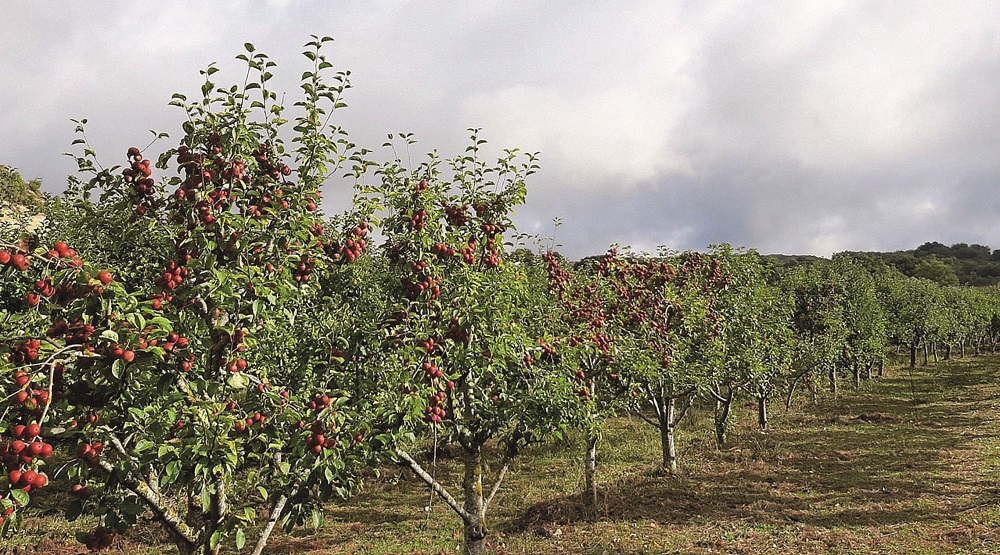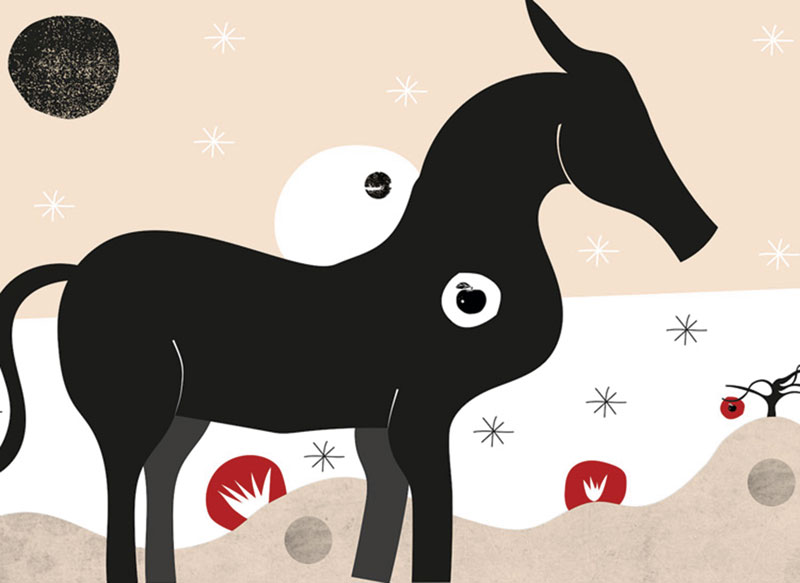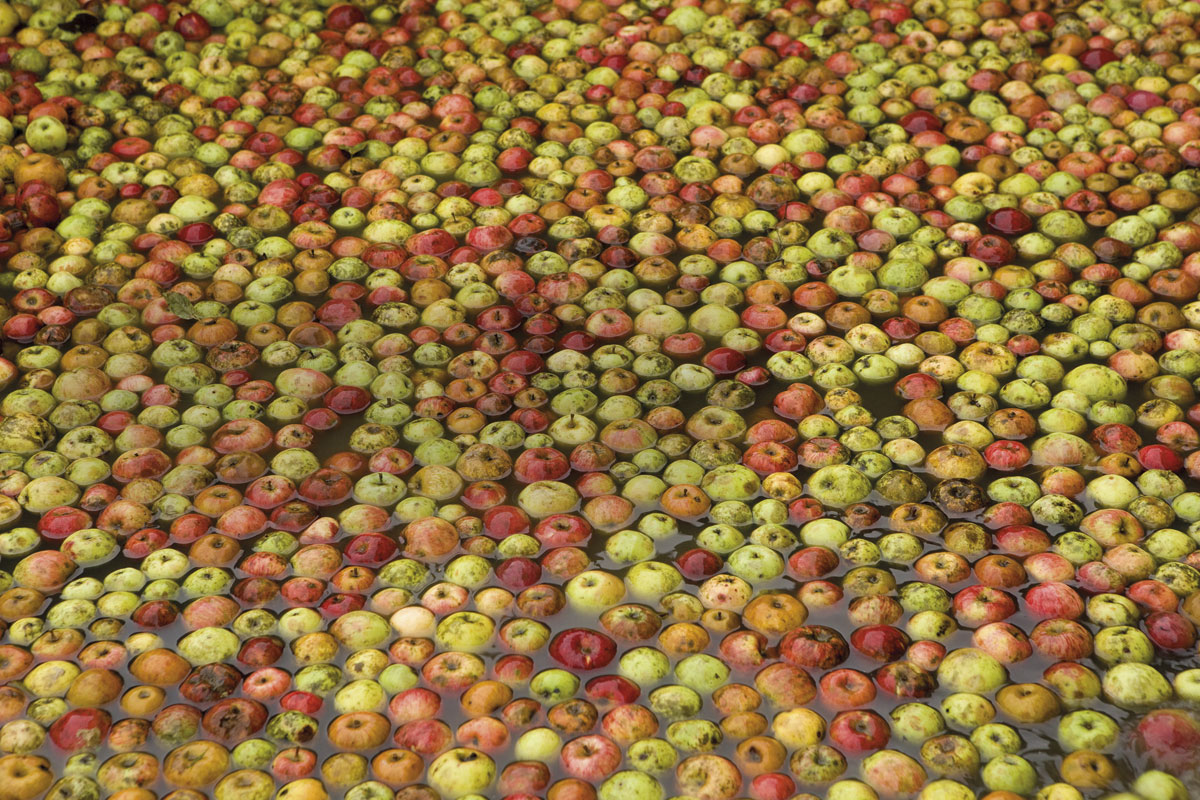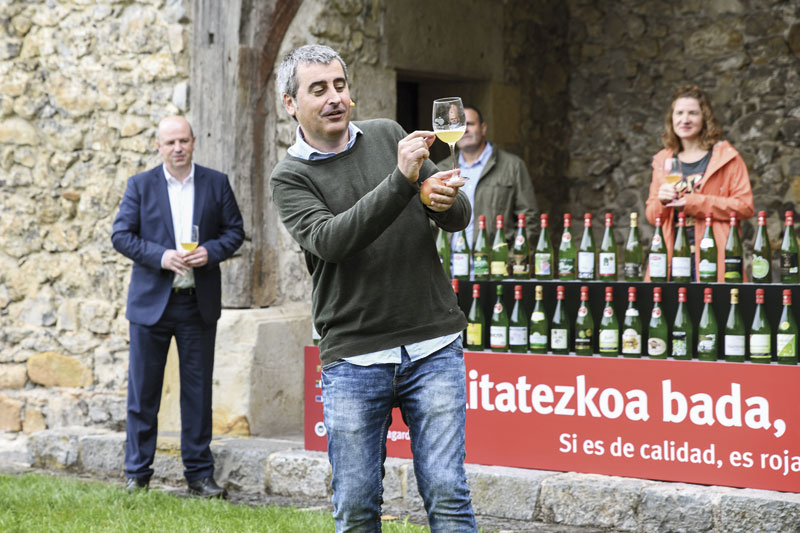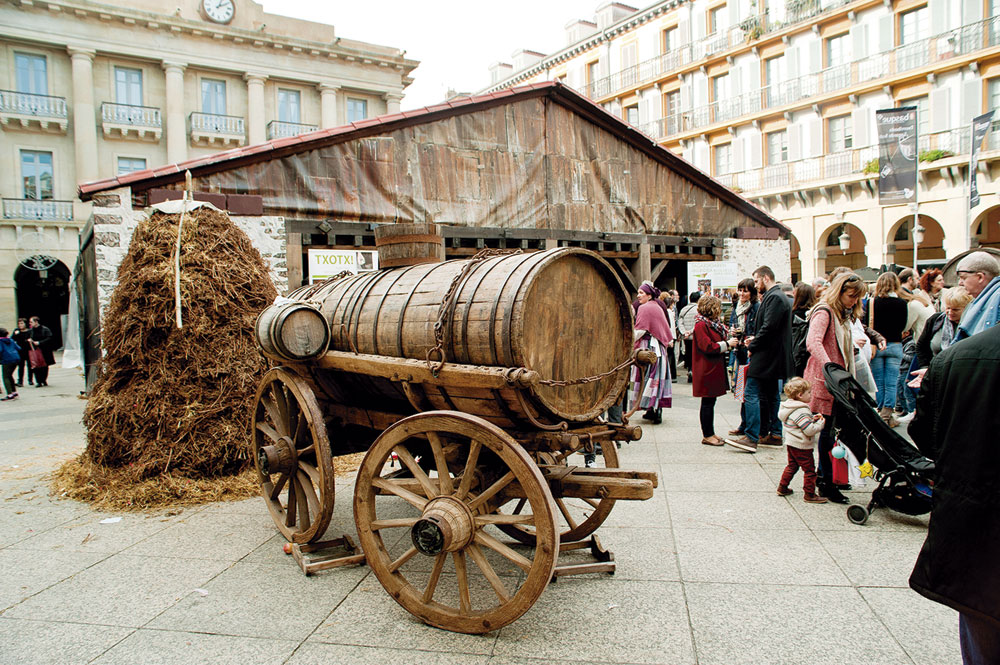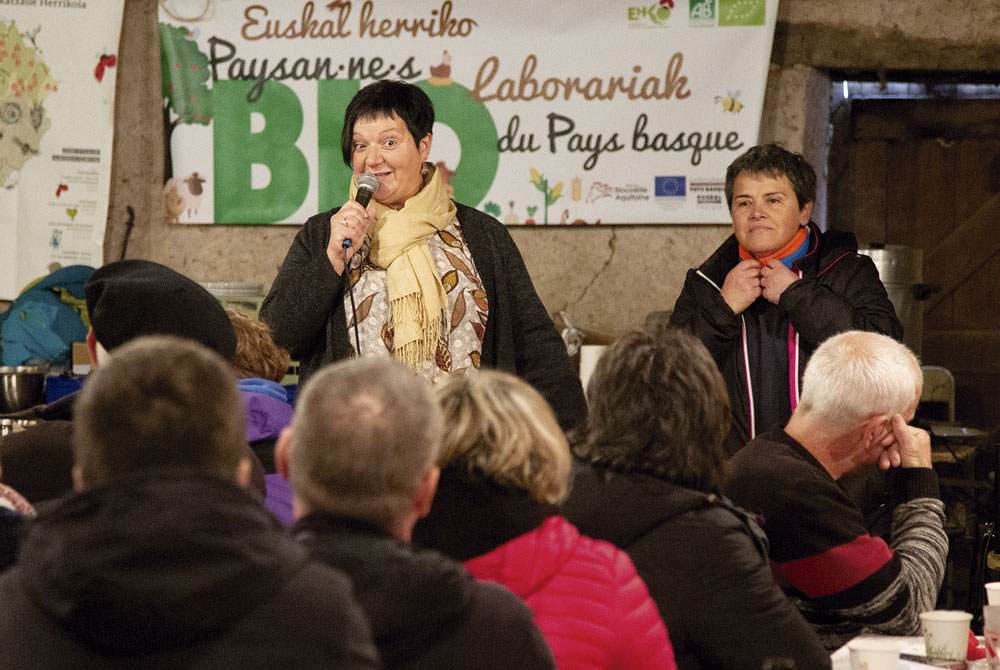Making your place in a world that's been male
- Cider is one of the hallmarks of the culture and tradition of Euskal Herria, more than just a drink, a product linked to an entire heritage. But as in many other areas that they drink from tradition, we tend to relate cider to cider to cider to people of a specific profile: older men.

It is true that the world of blacksmiths has always been a male world, both in terms of production and, perhaps, in terms of consumption. But really, is the reflection of the current reality that stereotyped image that comes to mind first? Where are women in cider making? What has historically been their place?
If we get padded, today we will find the tailings without major difficulties. In Gipuzkoa, at least nine quarries are run by women, and although we look at the website of the Cider of Bizkaia, we find two others. The face behind the cider looks like something has changed.
In this report we have wanted to talk to those who live close to the subject. We have worked in the present with Oihana Gaincerain, of the Zelaia steelworks of Hernani, who manages the company together with his two sisters, and in the past with the historian Lourdes Odriozola. And yes, the conclusion is that women have always been in cider making. It's often been in the shadows.
Oihana Gaincerain · Sidrería Zelaia
“Women have always been there, but they have done work that they don’t see.”
The fourth generation of Zelaia steelworks is made up of three sisters.
Yes, indeed, we are the fourth generation. When our grandfather was a little boy, he came with his parents to Zelaia Manor. They were baserritars, mainly selling milk and orchard products. They also made cider, but not as a business. Our grandfather started producing more cider, but he also made the life of milk and orchard, and my father followed the same path to the beginning. He was making a cider in a small winery here and friends of his grandfather, of the association, crew… something they tried and brought home the cider, but it didn’t look like a business.
So, it was very different from today's sidrry.
Absolutely, yes. For those who came there was a little fire, and our grandmother would do something to take it away, some cavalry, but that was it. Oh, and grandma also started making cod tortillas! Then our mother learned that too, she started coming and gradually opened up to the public. My mother would come to the kitchen and her father would put himself on the grill, the tall chotx between them. In this way, they gradually became professionalized giving a new place to cider. In that transition we have known the silage, which has gone from being part of the farmhouse to being the silage as the silage.
You say that women have always been in cider making.
I think every house was going to be different, but in our case, women have always been working. I would also say that they have been looking inwards and making decisions. Our grandmother worked in the kitchen, in the orchard and in the farmhouse, but maybe she didn't participate so much in other things. Later, our mother began to carry the company's accounts as well. I was there and I was involved, but you didn't see it.
I work in the shadow, right?
Yes, women have always worked at the back, in those kitchen work and in other internal work. It is true that hitherto the blacksmith and the head of the blacksmith, from the point of view of the figure, has always been related to man. The image of the owner of a dwelling has always been the man of the house, knowing that the women have always been there, because in a dwelling they all work. My father has heard it many times: “With three daughters, who is going to continue with the syrup?” Or it was hoped that we would marry someone and that that other person would follow the syllabus. No, we have followed!
Were you clear that it was always going to be like this?
We weren't clear about it, no. The parents didn’t want it to be something imposed, something like “this has touched you and you have to stay here.” They encouraged us to learn other things and follow our path. They told us that then, when necessary, we would decide whether or not to continue. So we did that, each one of us on its way. Maialen did agronomy, I did agricultural studies, and Jaionek administration and marketing. Then yes, the time came for his father's retirement, and that was where he had to decide.
At that time of the survey, did three women have doubts or headaches?
Well, the truth is, here we've always felt at home. Although each one has travelled its way, we have been very young in the cider, helping in the txotx season, as a waiter… That is why everything has been quite natural and familiar, and in that sense we have not noticed limits. We knew from the beginning that this world was very masculine, but not the sheer one's own, but the business world in general. The limitations were greater in this regard. But it is true that when I entered the cider sector, perhaps because I already knew the other cider from a very young age, I had no impediment.
The sector has also changed.
Yes, clearly. Some may still be looking for this male figure, but there are more and more women's led sidrys. In addition, those I know closely, like us, have taken the step very naturally, without really looking for it, because that is how it came out. In the end, it is important that there are models and that there is talk of the issue. Jaione, for example, participated a few years ago in Gastroandere of Gastronomy. This forum is more related to the hospitality and cooking than to the steelworks, but as we are, we feel identified. Feeling that you're not alone and sharing your doubts with others, that's what gives you support.
"When I entered the cider sector, perhaps because I knew other cider from a very young age, I had no impediment."
She was also the first president of the Board of Sidra Association.
She was president of the Association of Sidreros de Gipuzkoa, Arantza Eguzkiza, of the Iparragirre steelworks, but in the Board of Sidra, yes, I was the first. The relationship has been very natural and I have always felt good. Since I first started, even though I'm the only woman, I haven't seen any different treatment. I started participating in 2008, and in 2011, I was appointed president. But, as I say, we have never had problems within the sector. Another thing is with customers and suppliers…
Is it harder to relate to them?
The treatment is more difficult with some of them, yes. In contact with the clients, you realize that sometimes they mark the distance and that when they were talking to our father, they were among the men, there was another trust and a roll. You know you cut it. So, yes, in general quite well, but with some customers or suppliers we have had more difficulties than within the sector.
(Sister Jaione Gaincerain works at the next table and adds: It also happens to those who come to sell here, many times. They ask: “Where is the boss? I want to talk to him live.” And we: “Yes, we are the older ones!” This is also done many times by phone.)
Yes, and at times I have realized that we have also been treated with a paternalistic tone, such as “ai mi niña…”. But, well, it's always been with people from outside. On the other hand, with the people coming to the txotx there is also everything. There the audience is very masculine...
That's what I had to ask them. Sidrería is still a masculinized space, right?
Jaione: Yes, it is still a very masculine area, especially throughout the week. On weekends, the issue is more confusing, there are couples, mixed crews, groups of girls… But throughout the week, women, zero. For many days there is none.
Why is that?
I believe that men still have more social life. On the other hand, at dinners, meals, etc. They also come from companies. In short, it's a reflection of society that you see in shearing. There's some loose girl, but it's very punctual. On the other hand, it is true that in recent years I have also noticed some change. When I was young and here I worked as a waiter, there was the typical male crew, with chuleton… they were apple, and we had the cameras. I'm nice! And we heard that. And if we said that cider was made by us, some of us were treated as if we had no ideas. In this respect, I believe that we are now achieving a little more normality. That, or we've learned to be politically more correct.
Women who demanded and won the City Hall of San Sebastian
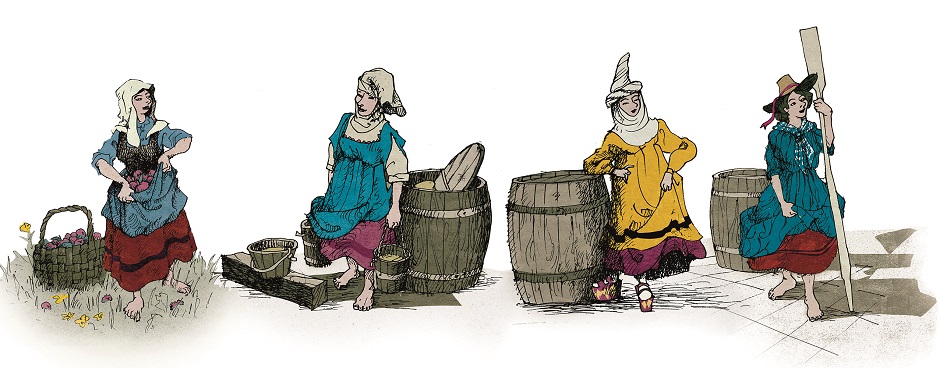
Historian Lourdes Odriozola brings us closer to the past. The female entrepreneur completed in 2019 the exhibition in sidrería, driven by the Sagardoetxea Museum of Astigarraga. It gathered the history and curiosities of four women who had a close relationship with the cider between the sixteenth and eighteenth centuries: Maria Labaien, Maria de Etxebarria, Ana de Beroiz and Fagola and Maria Josefa de Orobio. The historian was surprised when he made a search for ‘women and cider’ in the Gipuzkoa registry and 202 references were found. Judgments, robberies, divorces -- the notes of litigation and trials with pink press stains of the time showed that the relationship between women and cider is ancestral. We've brought here the stories of two of these female entrepreneurs.
History of Maria Labaien and confiscated barrels
It happened in 1565. Labaien's husband was a merchant negotiator and, upon his death, he took over. Labaien was a shareholder of a boat traveling to Newfoundland, but instead of paying money, he paid his share with the cider. What happened? The port of Pasaje was a very conflicting port for the departure of the boat, since it belonged to the jurisdiction of the three peoples: Hondarribia, Errenteria and San Sebastián. When Labaien took the cider to the boat, the authorities of San Sebastian seized him all the barrels claiming that the boats could only catch the cider under the jurisdiction of San Sebastian. And Labaien was a lezotarra… That woman knew she was in a male world, but instead of rejecting her, she decided courageously to bring the City Hall of San Sebastian to trial. The Court ruled and forced the City Hall to return the confiscated vats. Today, in the Lezo festivities, they receive annually the visit of the character that serves as the base of Labaien, as a tribute, and from their experiences, the town hall of Lezo also drew a book of stories.
Maria de Etxebarria and the cider who extinguished the fire
Did you know that before, when water was lacking, they used cider to extinguish the fires of the villages? This was the case of Etxebarria, which occurred in 1637. Etxebarria lived today in the Old Town of San Sebastian, on Fermín Kalbeton Street. Her husband was a famous family, from the Okendo family. But Maria de Etxebarria became a widow with her six children and her husband’s debts. To fight them, she sold cider from other producers, in a business set up in the basement of her house. One day there was a large fire near his house and as all the water was finished, his own cider was used to shut it down. The authorities at the time would be a bit ‘ready’, because they paid nothing to Etxebarria. He did not accept this and demanded the city council – yes, once again they say that the story is repeated, right? In this case it was also a winner: the city council finally had to pay the cider it used to extinguish the fire.











